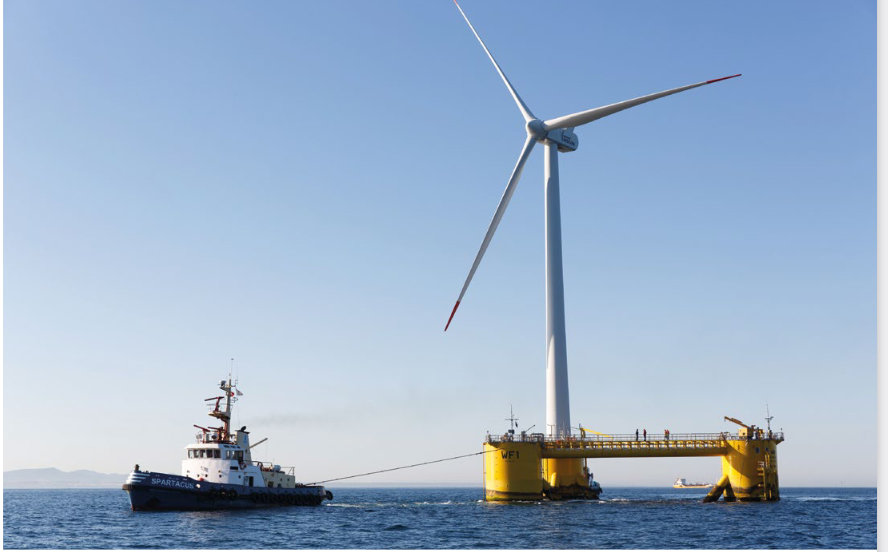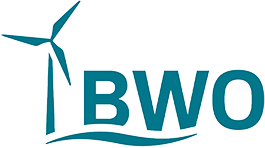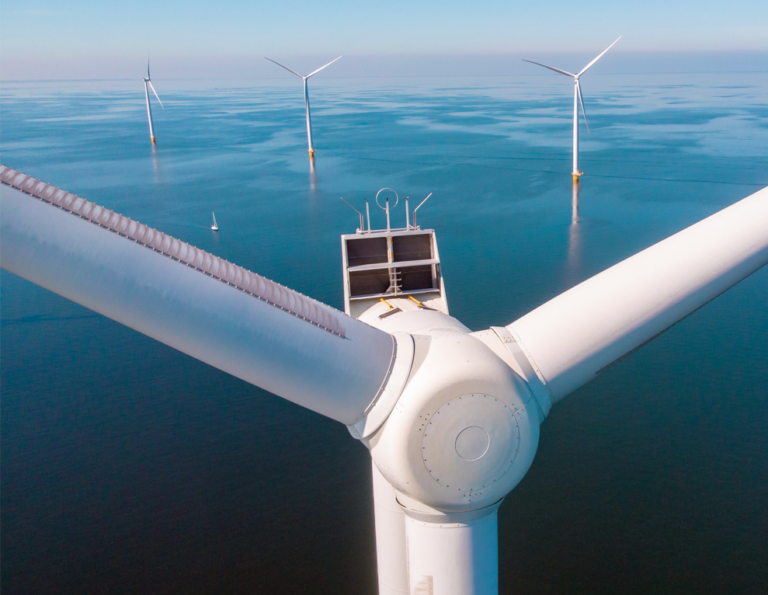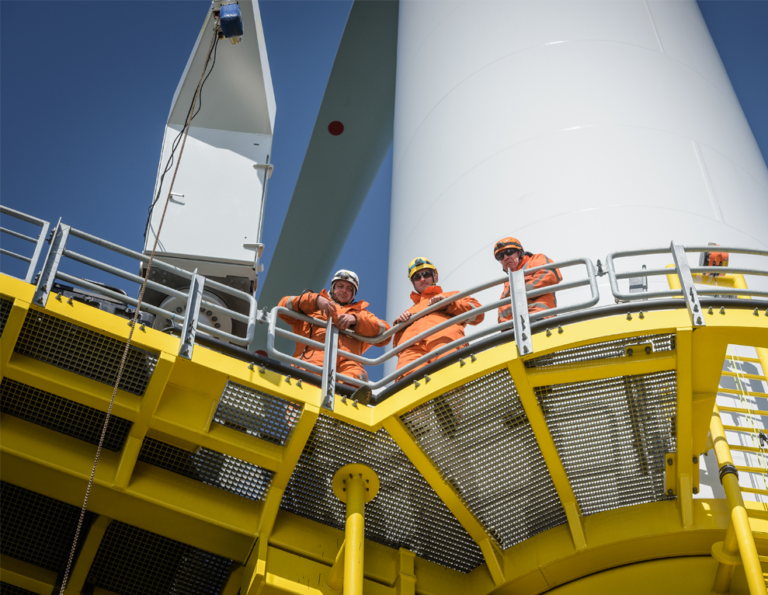Expansion into the deep sea with floating wind power
So far they are very rare - floating wind farms. The type of ground anchoring makes it possible to develop deeper waters. Therefore the method is interesting for many European countries.

What is swimming there? Right - a wind turbine. Hollow body foundations with air in them make it possible. In technical jargon the technology is called "floating offshore wind energy". The principle seems simple: wind turbines are built on floating foundations that are anchored to the seabed. The advantages of this method over foundations driven into the seabed are obvious. The interventions in the marine environment are much smaller, as the mooring of the floating foundations on the sea floor is less noisy and hardly any building structure has to be removed again during dismantling. Above all, however, floating wind farms enable wind energy to be used at locations with great water depths and they promise greater energy yield, since the greater the distance from the coast, the stronger the wind, and more full-load hours can be expected per year.
The potential of this technology is therefore huge. Around 80 percent of the sea areas eligible for offshore wind energy are deeper than 60 meters and are therefore not economical for traditional wind turbines anchored to the ground ("bottom-fixed offshore wind"). With their floating counterparts, that should change in the future and more areas will be developed for offshore wind power. A 2017 report by the European industry association WindEurope certifies European waters 4000 gigawatts of possible power from floating wind power, significantly more than the combined potential of the US and Japan, the report emphasizes. What about the practical implementation?
Technology in its infancy: pilot projects
The number of floating offshore wind turbines worldwide is still low. The scope of the project ranges from the test turbine to the fully connected wind farm, as was the case recently Portugal's coast is operational "Windfloat Atlantic" project. Three wind turbines with a capacity of 8,5 megawatts were connected in the Atlantic at a depth of 100 meters to a 20-kilometer cable that connects the park with the nearest transformer platform. This makes the floating wind turbines off Portugal's coast among the largest and most powerful of their kind.
Internationally, European companies have so far been ahead of the curve when it comes to testing the technology according to WindEurope around three quarters of all “floating” pilot projects worldwide. The company Equinor took the decisive step in 2017 and built the world's first floating wind farm "Hywind" 25 kilometers east of the Scottish coast with a total of five turbines and a capacity of 30 megawatts. Ideol followed with the construction of a pilot plant ("Floatgen") off the French Atlantic coast. Spain, Sweden and Norway have also been testing such floating wind turbines for the past two to three years.
European companies are the pioneers; today they manage three quarters of over 50 floating projects worldwide.
WindEurope "Floating Offshore Wind Energy -a Policy Blueprint for Europe" (2019)
In the next two years alone, six further European projects are to go into operation, four of them in French waters. The greatest potential lies off the coasts of Great Britain, Ireland, France, Spain and Portugal. There are wide, deep bodies of water with steeply sloping sea beds and the coasts are often densely populated with cities and industry. This guarantees high energy yields with short transmission paths at the same time. Of the world's largest floating wind farm “Kincardine” is already being built off the Scottish coast. A total of five wind turbines of the heavyweight class of 9,5 megawatts will be used, the systems are scheduled to go into operation this year and will overtake the Portuguese floating ferris wheels.
There are even more advantages for operators with floating wind turbines: their foundations are less expensive to install than steel pipes anchored in the seabed and are not so dependent on the soil and sea conditions. Up to now, however, "floating" systems are almost twice as expensive compared to ground-anchored foundations, as it is still a very young technology. Similar to conventional offshore wind power, however, cost reductions are also expected here. Industry experts from WindEurope and the International Energy Agency (IEA) assume 38 up to 50 percent price reduction by 2050. That promises good prospects for the floating turbines, but how does the principle actually work technically?
Foundation types
As with the floor anchoring, there are also different versions of the floating foundations. The four most popular methods are:
In this variant, the wind turbine is mounted on a flat, floating foundation. In the middle of the floating body there is a moon pool, which ensures the necessary stability even with larger waves. The foundation is anchored in the sea bed with ropes.
The platform, usually a triangular steel frame with vertical cylinders, is suitable for depths of up to 200 meters. Large plates are welded to the bottom to restrain vertical movement. The system can be set up on land in a dry dock - a big advantage over the other concepts. Portugal used the “semi-submersible swimmers” in the “Windfloat Atlantic” project.
The “Spar-Buoy” concept is the pioneer among floating foundations and at the same time the most material-saving one. The buoys were used in the Scottish “Hywind”. It provides for a large, hollow steel cylinder that serves as a float and tower. Just like an iceberg, it reaches further underwater than into the sky. At its lowest point it is filled with ballast, so the center of gravity moves far down. Spar buoys are stable in the sea even in strong waves. The problem is the immense depth. This means that only locations with a water depth of around 200 meters can be developed.
It is suitable for water depths of 50 to 200 meters. A mostly cylindrical float is pulled slightly under water by taut chains or ropes and held in the same position. The chains are held either directly on the seabed or on a counterweight weighing up to several thousand tons. The holding chains are exposed to enormous forces in strong seas.
The first three variants are loosely attached to the sea bed. This allows for easier installation while the tension leg platform requires more solid anchoring. This allows a more stable structure. All four types of foundation are already being tested or have already been tested in various projects. The current one offers an overview of all planned and already existing floating offshore projects "Global Offshore Wind Report".




